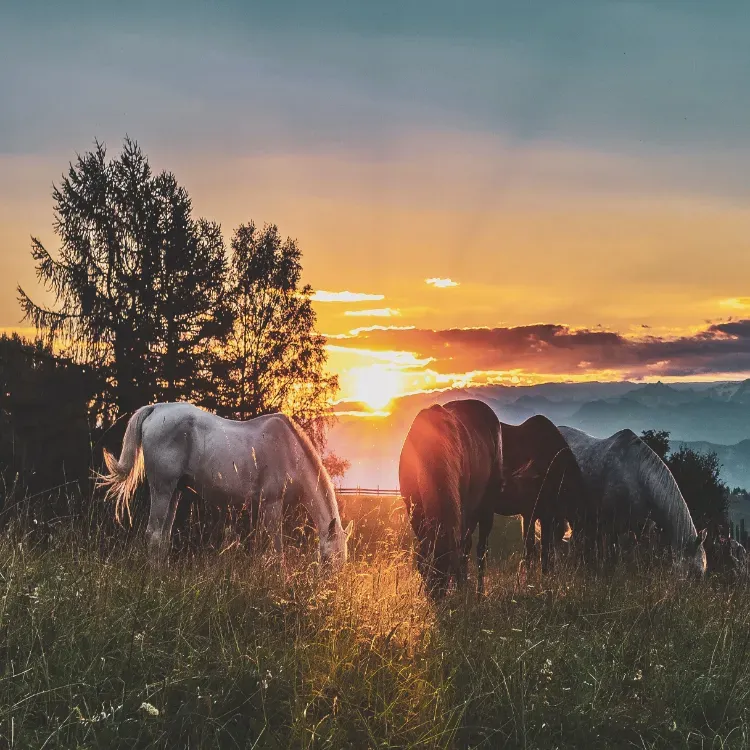
Table of Contents
Introduction: Preventing Laminitis in Horses and Ponies
Laminitis is a dreaded word in the equestrian world. It's a painful and sometimes life-threatening condition that affects the hooves of horses and ponies. Owners know the importance of keeping their stock sound and healthy, but laminitis remains a persistent challenge. While this condition plagues many domesticated equines, it's fascinating to note that feral herds seem to be generally immune to it. In this article, we'll explore the reasons behind this disparity and offer practical tips for keeping laminitis-prone horses in good health.
How come Feral Horse Herds are Laminitis free
To understand why feral herds remain largely untouched by laminitis, we need to take a closer look at their way of life. Horses and ponies living in these natural, unfenced environments follow a unique pattern:
- Constant Movement: Feral equines are constantly on the move, regardless of the season. Unlike their domestic cousins, these horses have a lifestyle that doesn't allow them to stay in one place for extended periods. We must remember that horses have evolved to be constantly on the move and mainly at the walk with some trotting or a faster pace when agitated by a potential threat.
- Sparse Grazing: The grazing available to them throughout the year is not as rich as the pastures that many domesticated horses enjoy. Most of the time these feral horses have to work harder to find food and good grazing is only spasmodically available.
- Gradual Weight Changes: In preparation for winter, they gradually put on weight during the Spring and again in the Autumn. However, they do not become overfat as they are on the move and good grazing is not readily available.
- Winter Adaptation: Feral horses lose weight over the winter months, reprogramming their bodies to handle richer spring grass without succumbing to laminitis.
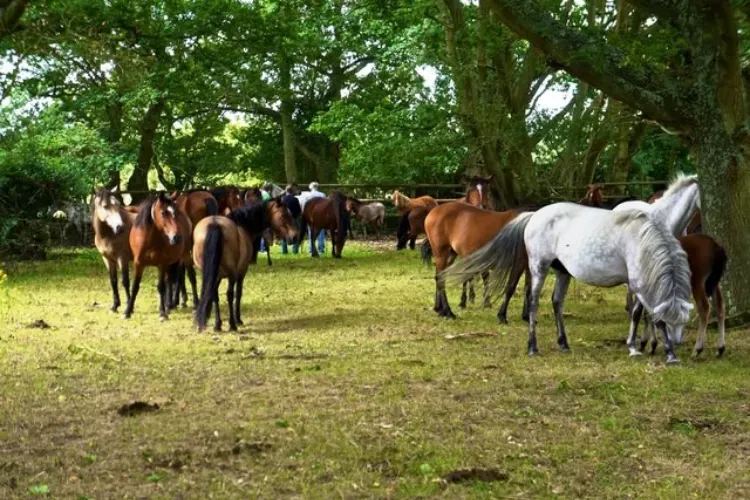
Feral Ponies
Feral ponies on Exmoor are healthy and laminitis-free.
These unique aspects of feral herd life play a significant role in preventing laminitis. Let's delve deeper into why many domestic equines face a different reality:
- The horse or pony is kept too fat in winter: Many domestic horses are kept in stables or small paddocks during Winter, leading to excessive weight gain and significantly less exercise than feral horses.
- A rush of good spring grass overwhelms their systems: When these plump and unfit domestic horses are suddenly exposed to lush Spring grass after a season of limited foraging and exercising, their digestive systems can struggle to adapt, increasing the risk of laminitis.
- Once an equine develops laminitis: Unfortunately, once a horse or pony has experienced laminitis, they become more prone to it, even in the winter months. These equines are frequently in a pre-laminitis stage and on the fringe of foundering.
Tips for Keeping Laminitis Horses Sound
The key to preventing laminitis in domestic horses lies in emulating the positive aspects of feral herd life while avoiding the pitfalls. Here are some practical tips:
- Provide Daily Exercise: To keep them active and healthy, ensure your horse gets daily exercise, including walking and trotting. Daily grazing and using a horse walker is OK, but ridden exercise, such as hacking and turning out for part of the day is better still. Remember that where there is no grazing and hay is fed from a manger the horse will stand and eat rather than move and eat. So it is best to turn out where some grazing is available.
- Control Grazing: Avoid rich pastures at any time of the year and encourage the horse to move around and work for food. It will also significantly reduce their sugar intake.
- Maintain a Slim Figure: It's crucial to keep your horse slim throughout the year. This sounds so simple but many people in the horse world do not know what a slim horse looks like. If you always see fat horses you can easily think this is the shape horses should make.
- Monitor the Horse's Pulse: A higher than normal easily detected pulse in the horse's lower leg is an indication of a problem and this could be the start of laminitis or a horse entering a pre-laminitic stage. Regularly check the pulse of susceptible horses. Normally the horse's pulse will be difficult to detect but if it is faster and stronger expect an emerging foot problem. Act swiftly if emerging laminitis is suspected and this means better control of the horse's calorific intake while still providing roughage. For some horses, this will be enough but if in doubt seek veterinary assistance as is required. For more on this read the next article suggestion.
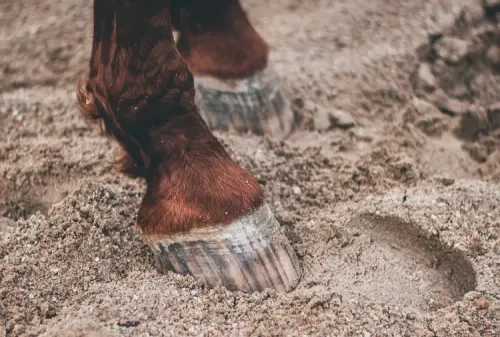
Article Suggestion
A Life Saver – Check Your Horse’s Digital Pulse for Emerging Foot Problems- Check for unusual Heat in the Hoof: Daily feel the hoofs and if any are hotter than normal this could also indicate that there is a problem and this could be the start of laminitis.
- Consider the Horse Stance: The way a horse stands at rest will give insight into problems. A horse with Pre-Lamanitic Metabolic Syndrome will often display subtle changes to the way it stands. By understanding what to look for the horse's management can change to prevent the development of laminitis. For more on this read the next article suggestion.
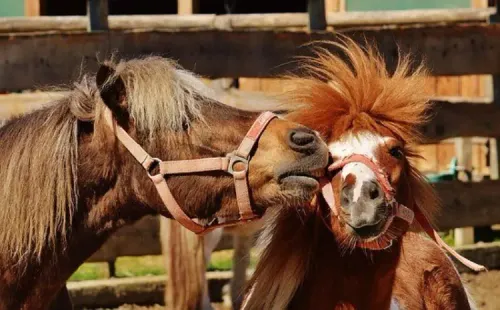
Article Suggestion
A Snapshot – The Low Down on Pre-Laminitic Metabolic SyndromeWhat does a Slim Horse look like?
Identifying a slim horse is easy but there are people out there who think an overweight horse is a healthy horse. Furthermore, many vets are dealing with the medical effects of horse and pony obesity. These equine problems range from EMS and laminitis to joint deterioration and even respiratory problems.
So How to Identify a Slim Horse
- The ribs must be very easily felt without being seen. This means that when you run a hand along the rib cage there must be a real definition between each rib.
- The horse's spine should not sit in a depression, and when the flat of your hand is placed over the horse's spine the shape your hand makes should be rounded and curved rather than flat as if it was placed on a table.
- There should be no fat pads behind the horse's withers.
- The quarters should not be over-round, and there should be no gutter running down the middle. The outline, when viewed from the tail end, should resemble a curved C-shape rather than a rounded apple.
- The neck should be lean without fat deposits and should join the shoulder with good definition and angulation.
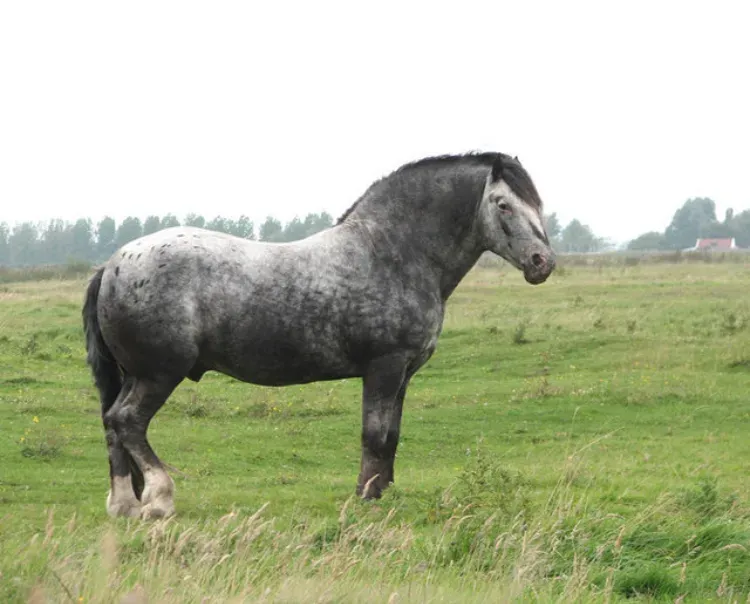
Overweight Horse
This horse is grossly overweight and is a candidate for developing laminitis.
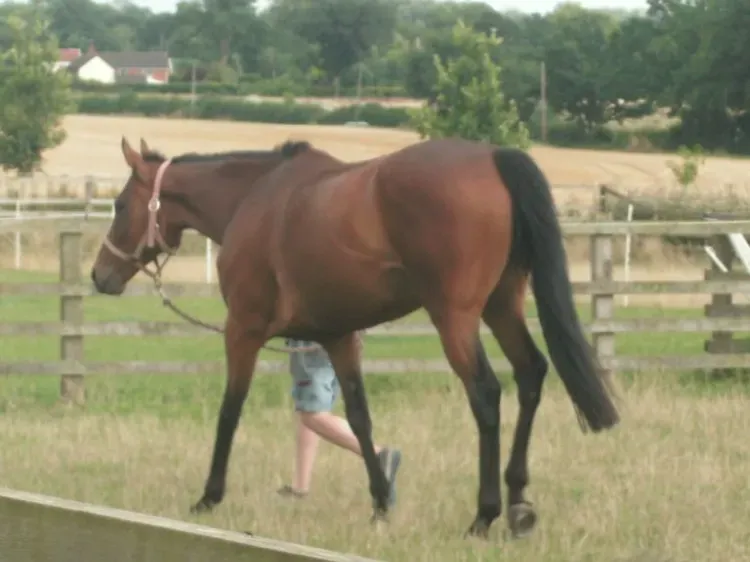
Fit Horse
At the other end of the spectrum, this very fit thoroughbred is not a candidate for developing laminitis.
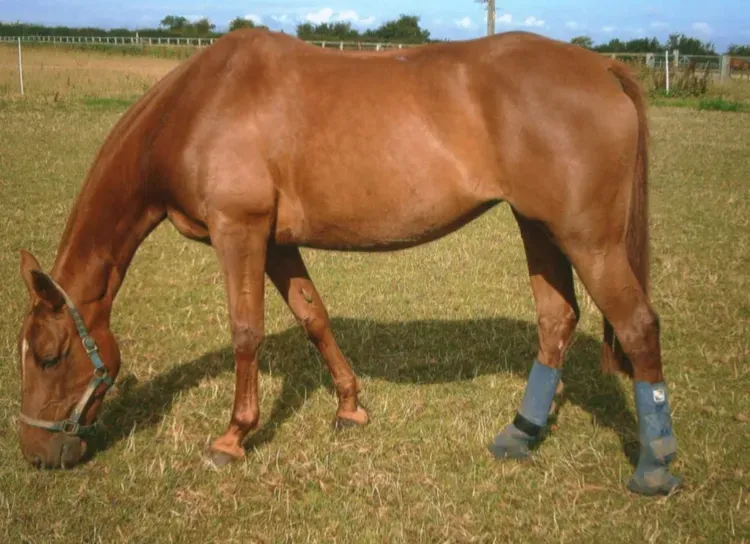
Big framed example
This 18-year-old horse has a big frame but is lean and fit.
The take-home Message
Not all horses are prone to laminitis, but many hardier types can be. Keeping laminitis-prone horses sound requires careful management. To ensure your equine companion remains healthy and free from laminitis, maintain their fitness, keep them at an ideal weight, and limit their access to rich grass. Once an equine has experienced laminitis, they will always be at risk of developing the condition. Be proactive in your approach to equine care and give your horse or pony the best chance at a long, healthy life.
FAQs
Can Thoroughbreds and Arabians develop laminitis?
Is laminitis always caused by over feeding?
Can I ride a horse that has laminitis?

Article Suggestion
How to Calculate your Horse’s Weight
